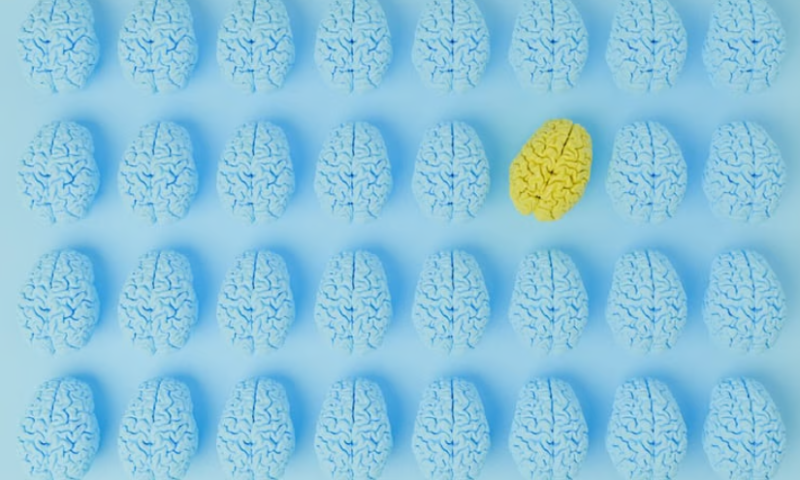An effort to map the way the brains of those with autism are genetically unique from neurotypical individuals has found that the differences go well beyond regions involved in social behavior and language. In fact, the distinctions are particularly profound in the visual cortex, according to a study published Wednesday in Nature by researchers from the University of California, Los Angeles (UCLA).
“Before this study, it was not appreciated how widespread changes might be in the brains of individuals with autism,” Daniel Geschwind, M.D., Ph.D., co-corresponding author and director of the Institute for Precision Health at UCLA, told Fierce Biotech Research. While observing the changes doesn’t prove they cause behavioral differences between autistic and neurotypical individuals, identifying them is an essential first step, he added.
“Honestly, we don’t know what these changes signify, but they give us clues as to what to look for,” Geschwind explained. “It’s extremely helpful to have this when you’re trying to understand what genes in the brain might cause the differences we see in the clinic.”
The new Nature paper is the culmination of a more than decadelong project Geschwind led. Some 10 years ago, he oversaw the first effort to study autism’s molecular underpinnings. At the time, his lab focused its research on gene expression in the brain’s temporal and frontal lobes, regions associated with social cognitive functions that have been shown to be altered in autism. There, they found differences in genes involved in synaptic functioning and connectivity as well as genes involved in the function of brain cells like microglia and astrocytes.
“Back then, we thought, ‘Let’s profile the regions that are most likely to be affected, because they’re involved in the function that seems to differentiate people with autism from neurotypical people,’” Geschwind said. “When we found marked changes there, that showed that despite heterogeneous clinical presentations, there was a common molecular underpinning.”
After the success of the first study, Geschwind and his team thought they should expand their work to other parts of the brain. This would tell them whether the differences they’d observed were a brainwide phenomenon or if they were restricted to the regions involved with functions that seemed to be altered in many autism cases.
To that end, the researchers performed RNA-sequencing analysis of 725 postmortem brain tissue samples from 112 individuals, about half of whom had autism. The samples came from 11 different cortical regions of the brain, including the somatosensory cortices. The team aimed to include regions from each of the brain’s major lobes as well as each of the primary sensory cortices, the regions responsible for processing sensory information.
The sensory regions were chosen as controls, Geschwind explained. The team didn’t anticipate many genetic differences there. But to their surprise, there were—particularly in area 17 of the visual cortex and the parietal cortex, which processes tactile, temperature and pain sensations.
“We didn’t expect them to have as many differences as the regions that are involved in human higher cognition and social cognition, but that’s not what we found,” Geschwind said. “The differences were brainwide but seemed to show a kind of gradient, where the visual cortex is the most affected region.”
Those differences could reflect a sensory processing sensitivity in people with autism, Geschwind added. That tracks with the experiences of these individuals, many of whom say they feel either hyper- or hypo-aware of sounds, textures, tastes and smells.
Again, the scientists don’t know yet if all the observed genetic differences manifest in behavioral disparities seen in individuals with autism. But for some links between genes and tissue, they’re already on track to find out. In the same paper, the researchers also reported on the findings of a set of single-cell sequencing experiments that showed how a cluster of autism risk genes dampened the expression of multiple cell types in a network of neurons across the cortex.
“That extends the previous findings to show that yes, indeed, these genes are causal,” Geschwind said.
As for the rest of the genes they identified, there’s much more research to be done. In the next phase of their work, the scientists plan to model some of the genetic differences in human brain organoids to see if they can find links like the ones they saw in the expression of cortical cells. They’ll also be working to understand why they saw such major discrepancies in the primary visual cortex, specifically area 17. And, eventually, the scientists hope to see whether they can apply computational approaches to develop therapies that could reverse some of the gene expressions they found.
It’s too early to tell where the findings will lead. But from Geschwind’s standpoint, such work is vital to unraveling the mysteries of neurology. “In modern clinical neuroscience, having a sense of what’s happening is a key starting point for trying to at least understand the state of the brain,” he said.

